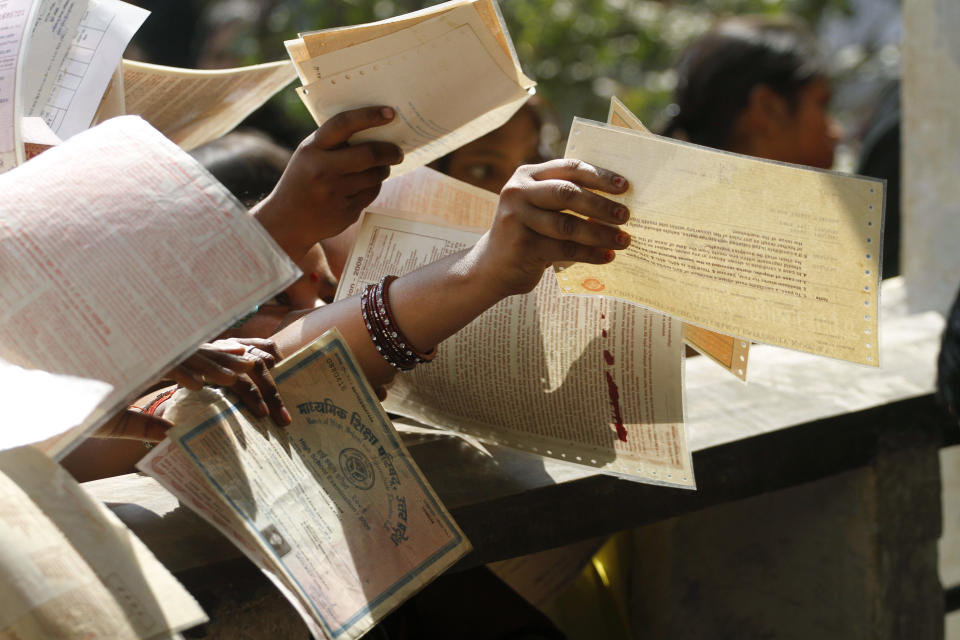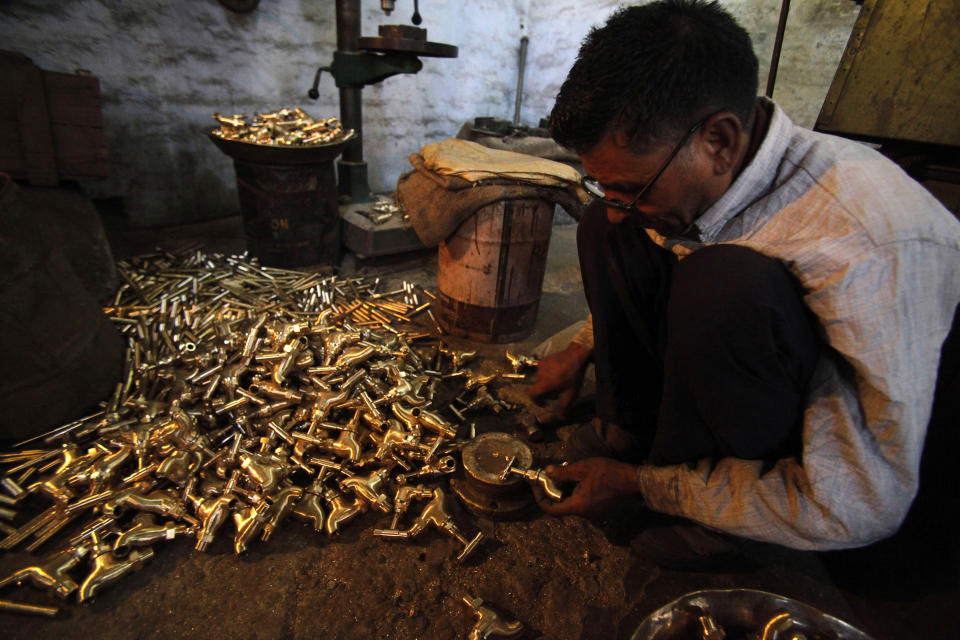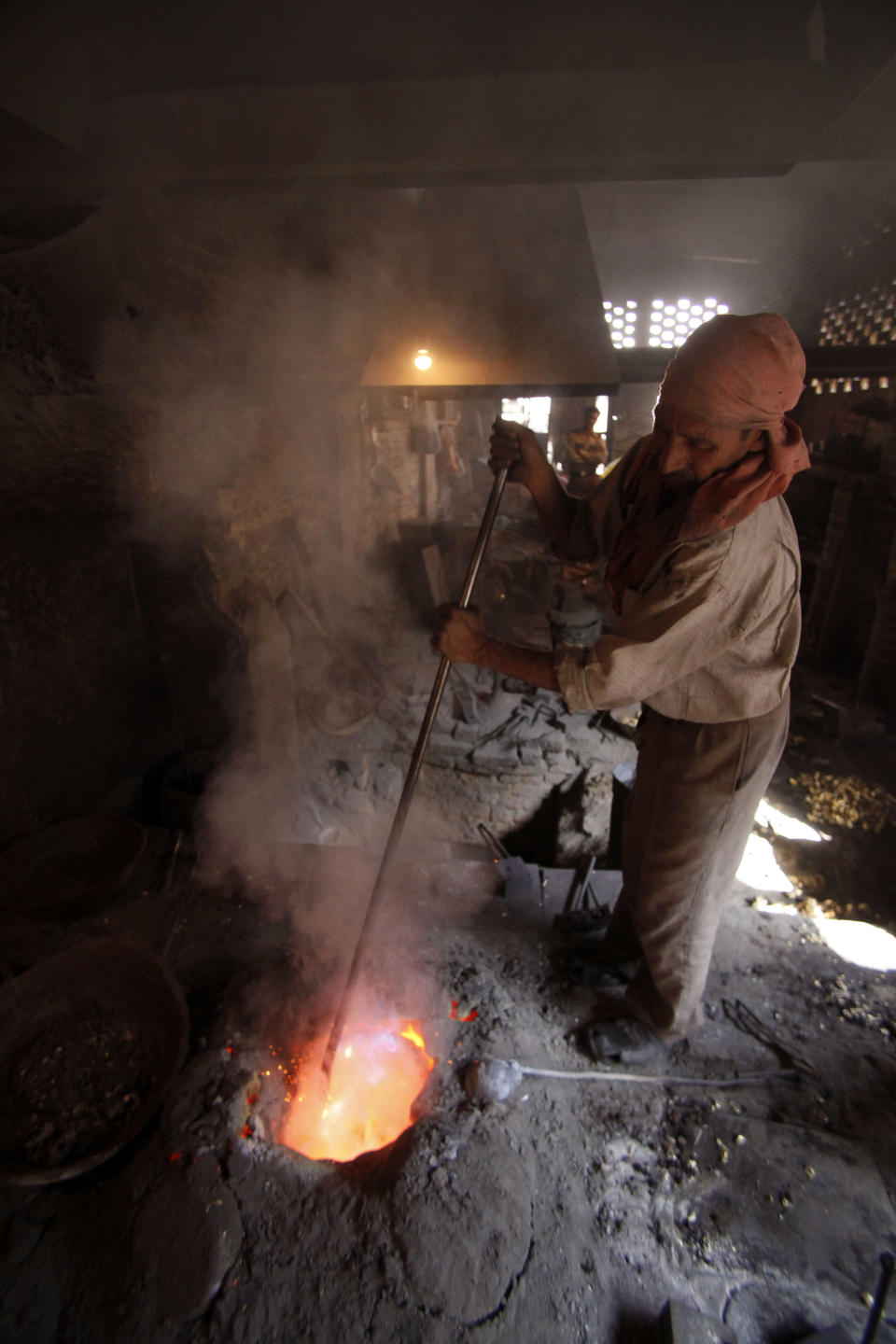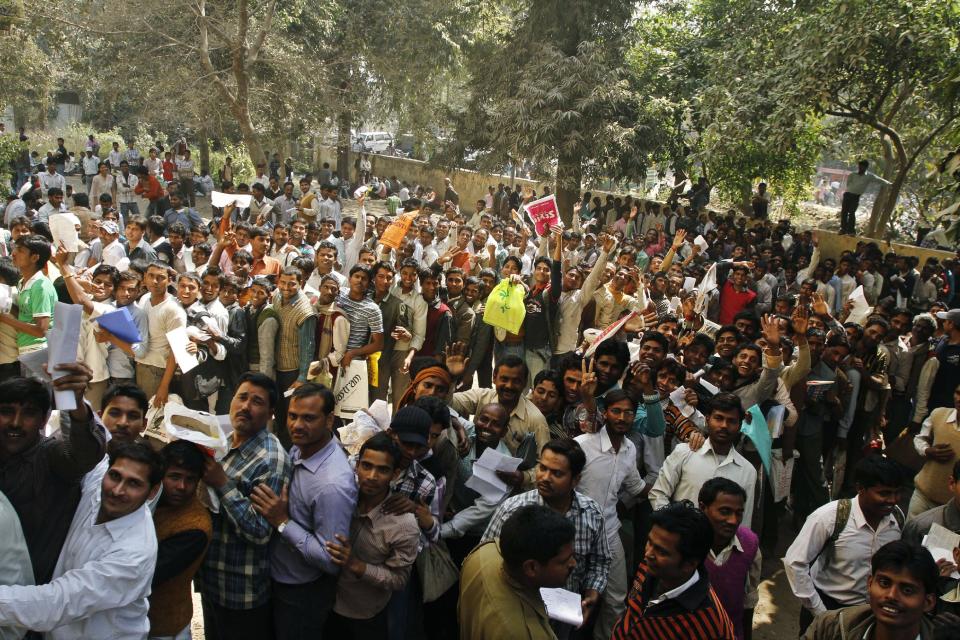India's economic growth sags to 6.1 percent
MUMBAI, India (AP) — India's economy grew at its slowest pace in over two years in the last quarter, adding to pressure on the central bank to lower interest rates despite stubborn inflation and a growing sense that monetary policy alone cannot fix what ails India's economy.
The 6.1 percent growth reported Wednesday marks a sharp slowdown from a 6.9 percent expansion in the July-September quarter. India's benchmark stock index was up 0.2 percent amid gains in other Asian markets.
Agriculture grew 2.7 percent in the October-December quarter from a year earlier, mining fell 3.1 percent and manufacturing eked out a 0.4 percent rise.
"Our worst fears are coming true," said Rajiv Kumar, secretary general of the Federation of Indian Chambers of Commerce and Industry, a business lobby. "The negative growth in capital formation over the past two years is the most disconcerting feature, because that shows investment has just stopped. . . Without investment, which was our main economic driver from 2003 to 2008, you can't expect anything."
High interest rates, rising production costs, stalled investment, policy paralysis and corruption scandals have all taken a toll on Asia's third-largest economy.
Indian policy makers have struggled with a toxic combination of high inflation and slowing growth. The central bank hiked interest rates 13 times before pausing in October and has urged New Delhi to unblock supply constraints to help fight inflation and better balance the budget.
Economists and the central bank are keenly watching the March 16 budget proposal for signs that New Delhi will bring the fiscal deficit under control and curb lavish spending on subsidies — the ruling party's attempt to redistribute the gains of growth in a nation where most people live on less than $2 a day.
"The focus will shift now from inflation to growth, but with oil staying above $120 you cannot take your eyes off inflationary risk," said Samiran Chakraborty, an economist at Standard Chartered. "You cannot put in more fiscal stimulus in terms of cash transfers. You should go in for fiscal consolidation and better quality of expenditure so medium and long term growth gets a boost."
He pointed to recent improvements in passenger car sales data, cash in circulation — which is a proxy for rural demand — and rebounding coal production and said India's growth may have troughed.
"We should see better growth numbers from here on, but coming back to the trend growth rate of 7.5 percent will take some time," he said.
The government is widely expected to miss its deficit target for the fiscal year ending in March. Chakraborty predicts the fiscal deficit will come in at 5.8 percent of GDP, 1.2 percentage points higher than targeted.
New Delhi is working to bring down the deficit, despite disappointing tax collection and the absence of one-off revenue windfalls, like last year's telecom spectrum auction. On Thursday, the government plans to auction 5 percent of its stake in state run oil and gas giant ONGC, which could raise $2.5 billion.
The government now says the economy will likely grow around 7 percent for the year ending March, down from earlier expectations of 9 percent.
___
Associated Press writer Katy Daigle contributed to this report from New Delhi.





